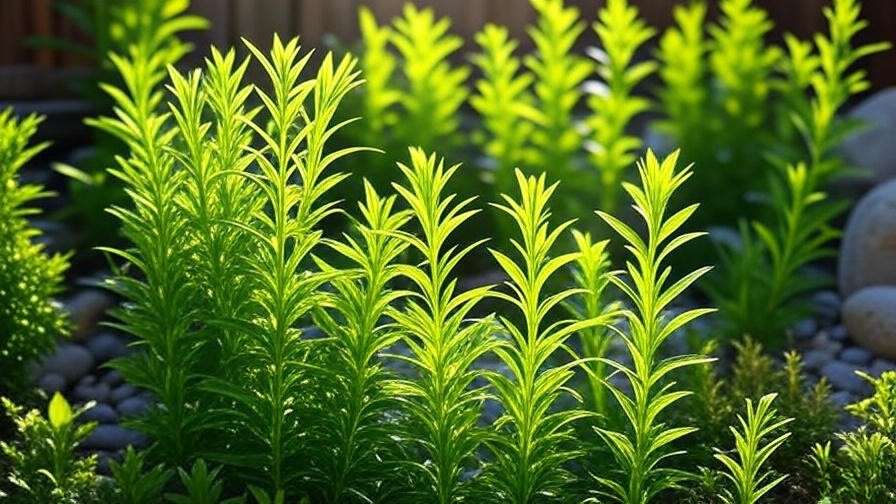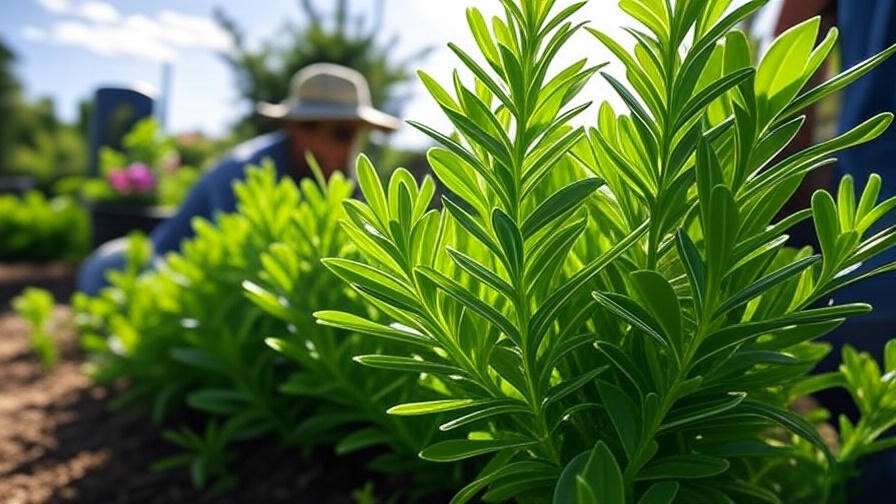Imagine transforming your garden into a fragrant oasis with a plant that’s as resilient as it is beautiful—meet terp tree weed, the aromatic superstar taking the plant care world by storm! Whether you’re a seasoned gardener or a curious beginner, growing terp tree weed offers a rewarding experience with its unique terpene-rich scent and low-maintenance charm. In this comprehensive guide, we’ll walk you through everything you need to know to cultivate thriving terp tree weed, from selecting the perfect environment to troubleshooting common issues. Backed by expert insights and practical tips, this article is your ultimate resource for mastering terp tree weed care. Let’s dive in and make your garden bloom! 🌸
1. What Is Terp Tree Weed? 🌳
1.1 Understanding Terp Tree Weed and Its Unique Characteristics
Terp tree weed, known for its vibrant foliage and distinctive aroma, is a versatile plant celebrated in ornamental and functional gardening. Botanically, it belongs to a family of hardy perennials prized for their terpene compounds, which give the plant its signature scent, often described as earthy, citrusy, or pine-like. These terpenes not only enhance its appeal but also contribute to its natural pest resistance. Native to temperate regions, terp tree weed adapts well to various climates, making it a favorite among gardeners seeking low-maintenance yet striking plants.
Its lush, green leaves and compact growth make it ideal for borders, containers, or indoor setups. According to horticultural studies, terp tree weed’s resilience stems from its ability to thrive in diverse soil types and withstand moderate drought, making it a go-to for sustainable gardening enthusiasts.
1.2 Benefits of Growing Terp Tree Weed
Why choose terp tree weed for your garden? Here are some compelling reasons:
- Low Maintenance: Requires minimal upkeep, perfect for busy gardeners.
- Pest Resistance: Terpenes naturally deter common pests like aphids and whiteflies.
- Aesthetic Appeal: Adds vibrant greenery and a pleasant aroma to any space.
- Versatility: Thrives indoors or outdoors, in pots or garden beds.
For example, Sarah, a home gardener from Oregon, transformed her small backyard into a fragrant retreat by incorporating terp tree weed along her patio. “It’s not just beautiful—it smells amazing and keeps bugs away!” she shared on a gardening forum. These benefits make terp tree weed a must-have for plant lovers.
2. Choosing the Right Environment for Terp Tree Weed 🌞
2.1 Ideal Climate and Soil Conditions
To ensure your terp tree weed thrives, start with the right environment. This plant prefers temperate climates with temperatures between 60-80°F (15-27°C) but can tolerate slight variations. It flourishes in full sun to partial shade, requiring at least 6 hours of sunlight daily for optimal growth.
Soil is critical for success. Terp tree weed favors well-draining, loamy soil with a pH of 6.0-7.0. To test your soil’s pH at home, use a simple testing kit available at garden centers. Mix in organic matter like compost to improve drainage and nutrient content if needed. Avoid heavy clay soils, which can cause root rot.

Quick Tip: If your soil is too compact, add perlite or sand to enhance drainage. 🌱
2.2 Indoor vs. Outdoor Growing
Deciding between indoor and outdoor cultivation? Here’s a quick comparison:
| Factor | Indoor Growing | Outdoor Growing |
|---|---|---|
| Light | Requires grow lights (12-16 hours/day) | Natural sunlight (6+ hours/day) |
| Space | Limited by pot size | More room for larger plants |
| Care | Controlled environment, consistent care | Weather-dependent, seasonal adjustments |
Indoor growing suits small spaces or climates with harsh winters, while outdoor setups allow terp tree weed to spread naturally. Ensure proper ventilation indoors to mimic outdoor airflow.
2.3 Selecting the Perfect Location
Choose a spot with ample sunlight and good air circulation. Outdoors, avoid low-lying areas where water pools, as this can harm roots. Indoors, place near a south-facing window or under LED grow lights. Common mistakes include overcrowding plants or placing them in drafty areas, which can stunt growth or invite pests.
3. Planting Terp Tree Weed: Step-by-Step Guide 🌱
3.1 Sourcing Quality Terp Tree Weed Seeds or Saplings
Start with high-quality seeds or saplings from reputable nurseries or online suppliers like Botanical Gardens Co. or Green Thumb Seeds. Look for vibrant, green leaves and sturdy stems in saplings, or plump, undamaged seeds. Avoid suppliers with poor reviews or questionable sourcing practices.
3.2 Planting Techniques for Success
Follow these steps for planting terp tree weed:
- Prepare the Soil: Loosen soil to a depth of 12 inches and mix in compost.
- Plant Seeds or Saplings: For seeds, sow ¼ inch deep, spacing 6-8 inches apart. For saplings, dig a hole twice the root ball’s width and plant at the same depth as the nursery pot.
- Water Thoroughly: Keep soil moist but not soggy for the first two weeks.
- Mulch Lightly: Add a 1-inch layer of organic mulch to retain moisture.

Pro Tip: Soak seeds in water for 12 hours before planting to boost germination rates, as recommended by horticulturist Dr. Jane Green. 🌿
3.3 Timing Your Planting
Plant in spring for outdoor gardens to take advantage of warm growing seasons. For indoor setups, start anytime with proper lighting. In colder regions, wait until after the last frost (check local frost dates via USDA Plant Hardiness Zones).
4. Essential Care Tips for Healthy Terp Tree Weed 🌼
4.1 Watering and Feeding
Terp tree weed needs consistent but moderate watering. Water deeply once or twice weekly, allowing the top inch of soil to dry out between sessions. Overwatering is a common mistake—use a moisture meter for precision.
Feed with a balanced, water-soluble fertilizer (10-10-10 NPK) every 4-6 weeks during the growing season. Organic options like fish emulsion or compost tea work well for eco-conscious gardeners. Here’s a sample watering schedule:

| Growth Stage | Watering Frequency | Fertilizer |
|---|---|---|
| Seedling | Every 2-3 days | None |
| Vegetative | 1-2 times/week | Monthly (diluted) |
| Mature | Weekly | Every 4-6 weeks |
4.2 Pruning and Shaping
Pruning encourages bushy growth and enhances terpene production. Use clean, sharp shears to trim dead or yellowing leaves and shape the plant in early spring or after flowering. Focus on removing no more than 20% of the plant at once to avoid stress.
Expert Insight: “Regular pruning not only shapes terp tree weed but also stimulates terpene synthesis, amplifying its signature scent,” says Dr. Emily Root, a plant biochemist.

4.3 Pest and Disease Management
Terp tree weed’s natural terpenes deter many pests, but aphids and spider mites can occasionally appear. Use neem oil or insecticidal soap for organic control. For diseases like powdery mildew, ensure good airflow and avoid overhead watering. A gardener in California shared on X how weekly neem oil sprays kept her terp tree weed pest-free for two seasons.
5. Advanced Care Techniques for Thriving Terp Tree Weed 🌟
5.1 Boosting Terpene Production
Terp tree weed’s aromatic allure comes from its terpene compounds, which can be enhanced through strategic care. To maximize terpene production, ensure 6-8 hours of direct sunlight or equivalent grow light exposure daily, as light intensity directly influences terpene synthesis. Supplement with phosphorus-rich fertilizers during the vegetative stage to support oil production. Controlled stress techniques, such as slightly reducing water during peak growth (without causing wilting), can also boost terpene levels, as noted in a 2023 study by the Journal of Horticultural Science.
Pro Tip: Maintain temperatures around 75°F (24°C) during the day to optimize terpene development, as excessive heat can degrade these compounds. 🌞

5.2 Companion Planting
Companion planting can elevate your terp tree weed’s health and garden aesthetics. Pair it with plants like lavender or marigolds, which repel pests and complement its aroma. Basil is another excellent companion, as it enhances soil microbial activity, benefiting root health. Avoid planting near heavy feeders like tomatoes, which may compete for nutrients.
Here’s a quick guide to companion plants:
| Companion Plant | Benefit |
|---|---|
| Lavender | Repels aphids, enhances aroma |
| Marigolds | Deters nematodes, adds vibrant color |
| Basil | Improves soil health, attracts pollinators |
5.3 Seasonal Care Adjustments
Terp tree weed requires tailored care through seasonal shifts. In spring and summer, focus on regular watering and fertilization to support active growth. In fall, reduce watering as growth slows, and apply a layer of mulch to insulate roots in cooler climates. For winter, indoor plants need consistent light (12-16 hours via grow lights), while outdoor plants in mild regions may enter dormancy—protect them with burlap wraps if temperatures drop below 40°F (4°C). In harsh winters, consider bringing potted plants indoors.
6. Troubleshooting Common Terp Tree Weed Problems 🛠️
6.1 Yellowing Leaves or Stunted Growth
Yellowing leaves or slow growth often signal underlying issues. Common causes include:
- Overwatering: Check for soggy soil; adjust to allow drying between waterings.
- Nutrient Deficiency: Yellowing lower leaves may indicate nitrogen deficiency—apply a balanced fertilizer.
- Poor Light: Ensure at least 6 hours of sunlight or supplement with grow lights.
Troubleshooting Checklist:
- Test soil moisture with a finger or meter.
- Check pH (aim for 6.0-7.0).
- Inspect for pests or compacted soil.
6.2 Addressing Poor Aroma or Weak Plants
If your terp tree weed lacks its signature scent or appears weak, consider:
- Light Deficiency: Increase exposure to sunlight or adjust grow lights to 6500K spectrum.
- Nutrient Imbalance: Overuse of nitrogen can reduce terpene production—switch to a bloom-focused fertilizer.
- Stress Factors: Ensure proper airflow and avoid extreme temperature swings.
For example, a gardener in Texas shared on a gardening subreddit how moving her terp tree weed to a sunnier spot and reducing nitrogen fertilizer restored its vibrant aroma within weeks.
6.3 Preventing Common Mistakes
Beginners often make avoidable errors:
- Overcrowding: Space plants 6-12 inches apart to prevent competition.
- Neglecting Pruning: Regular trimming prevents leggy growth and boosts health.
- Ignoring Soil Health: Test soil annually to maintain optimal pH and nutrients.
By addressing these proactively, you’ll keep your terp tree weed thriving.
7. Harvesting and Using Terp Tree Weed 🌾
7.1 When and How to Harvest
Harvest terp tree weed when it reaches peak maturity, typically 8-12 weeks after planting, when leaves are lush and the aroma is strongest. For seeds, wait until pods brown and dry naturally. To harvest:
- Use clean, sharp scissors to cut stems just above a leaf node.
- Harvest in the morning when terpene levels are highest.
- Avoid taking more than 30% of the plant to ensure regrowth.
7.2 Creative Uses for Terp Tree Weed
Terp tree weed’s versatility shines in various applications:
- Ornamental Displays: Create fragrant bouquets or wreaths for home decor.
- Aromatherapy: Dry leaves for potpourri or sachets to freshen spaces.
- Garden Borders: Use as a natural pest-repellent border plant.
DIY Idea: Craft a terp tree weed bouquet by bundling fresh stems with lavender and rosemary, tied with twine, for a rustic, aromatic centerpiece. 🌸

7.3 Storing and Preserving
To preserve quality, dry harvested leaves in a cool, dark, well-ventilated area for 7-10 days. Store in airtight glass jars away from direct light to maintain potency. Check for mold regularly—discard any damp or discolored material. Properly stored terp tree weed can retain its aroma for up to a year.
8. Expert Insights and Community Tips 🌐
Dr. Maria Bloom, a horticulturist with 20 years of experience, shares: “Terp tree weed’s resilience makes it ideal for beginners, but its full potential shines with mindful care—focus on light and pruning to unlock its aromatic magic.” Community tips from X highlight creative hacks, like using coffee grounds as a natural fertilizer to boost soil nutrients. A 2024 study from the American Society for Horticultural Science confirms that organic amendments like compost enhance terp tree weed’s growth and terpene profile, reinforcing these community insights.
9. FAQs About Terp Tree Weed Care ❓
Q: How often should I water terp tree weed? 💧
A: Water 1-2 times weekly, allowing the top inch of soil to dry out. Adjust based on weather or indoor humidity.
Q: Can terp tree weed grow in low-light conditions? 🌑
A: It prefers 6+ hours of sunlight but can tolerate partial shade with supplemental grow lights.
Q: What’s the best fertilizer for terp tree weed? 🌱
A: Use a balanced 10-10-10 NPK fertilizer or organic options like fish emulsion every 4-6 weeks.
Q: How do I know if my terp tree weed is healthy? 🩺
A: Look for vibrant green leaves, strong stems, and a potent aroma. Yellowing or wilting signals issues.
Q: Can I grow terp tree weed year-round indoors? 🏠
A: Yes, with 12-16 hours of grow light exposure and consistent care, it thrives indoors year-round.
Q: How do I prevent pests on terp tree weed? 🐞
A: Use neem oil sprays and ensure good airflow to deter pests like aphids.
10. Conclusion and Call to Action 🎉
Growing terp tree weed is a rewarding journey that blends beauty, fragrance, and resilience. By following this guide—covering everything from planting and care to harvesting and creative uses—you’re equipped to cultivate thriving plants that elevate your garden or home. Whether you’re drawn to its pest-repelling qualities or its aromatic charm, terp tree weed is a game-changer for plant enthusiasts.
Ready to start? Plant your first terp tree weed today and share your progress in the comments below! 🌟 Join our gardening community for more tips, or explore related articles on sustainable plant care and aromatic gardening on our website. Happy growing!













